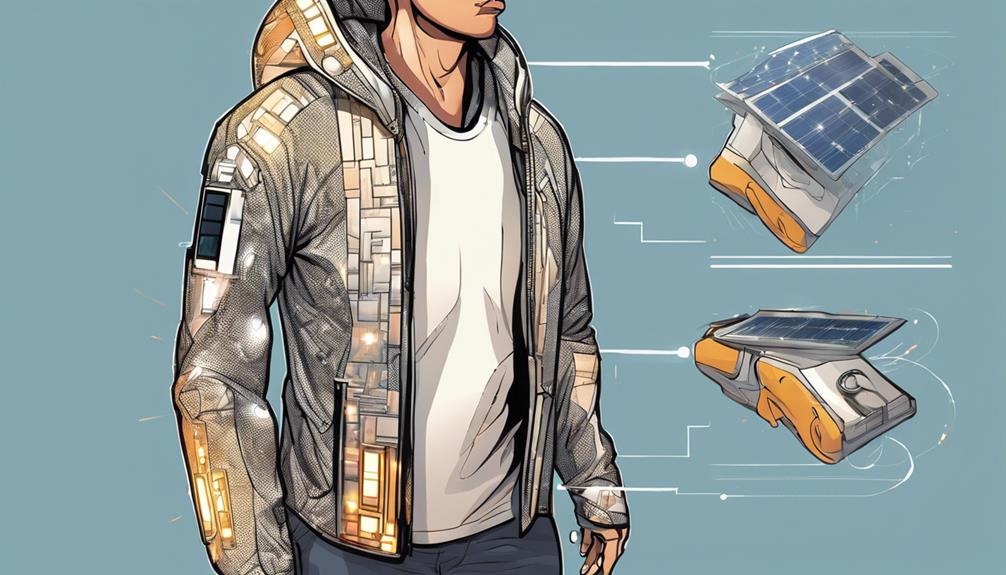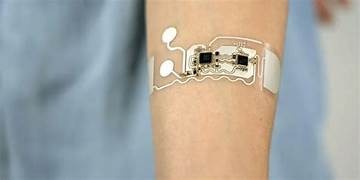
Redesigned by Imagination: Gadgets Made for One Thing but Used for Another
From gaming controllers to kitchen tools, discover how everyday gadgets find surprising second lives beyond their original design—thanks to creativity, necessity, and a touch of innovation.
✨ Raghav Jain

Introduction: Reinventing the Intended
When a gadget enters the market, it's usually with a specific purpose in mind. A rice cooker is meant to cook rice. A hairdryer dries hair. Yet, thanks to human creativity, many of these tools find entirely new purposes—some accidental, some ingenious. This reimagining of a device’s purpose often results in uses that are more popular, more useful, or even more lucrative than the original function.
In a world driven by innovation and rapid prototyping, the user is increasingly becoming the inventor, breathing new life into gadgets by rethinking what they can do. This article explores an extensive list of everyday tools and gadgets that were originally designed for one purpose—but are now being used in clever, unexpected ways. Whether born of convenience, curiosity, or pure necessity, these alternative uses have redefined the way we look at technology and design.
1. Rice Cookers: From Grain Prep to One-Pot Wonders
More Than Just Rice
Though designed for the simple task of cooking rice to perfection, modern rice cookers have become versatile kitchen heroes. Users worldwide have discovered that rice cookers are capable of much more—including steaming vegetables, making soups, cooking pasta, baking cakes, and even preparing frittatas.
Example: In Japan and South Korea, rice cookers are frequently used to make sponge cakes. In student dorms, they're often the only appliance needed to cook full meals.
Expert Insight: Culinary instructors now include rice cooker recipes in beginner cooking courses, especially in places where kitchen space is limited.
2. Hair Dryers: Beyond the Blowout
Tools of Speed and Heat
While the hair dryer’s original function is obvious, its secondary uses have surprised even engineers. Hair dryers are commonly used to defrost frozen pipes, remove sticker residue, speed up paint drying, and inflate air mattresses. The directed, controlled heat and air flow make it an unexpectedly versatile tool.
Creative Hack: Photographers sometimes use hair dryers to eliminate dust from lenses in a pinch, or warm up gear in cold environments.
3. Game Controllers: Accessible Input Devices
From Play to Accessibility
Game controllers like the Xbox Adaptive Controller were designed for inclusive gaming. However, many users with mobility challenges have adopted controllers for everyday computing tasks, such as navigating software, browsing the internet, or even controlling drones.
Surprising Use: Some tech-savvy seniors use game controllers to control home automation systems, as the layout is more intuitive than a tablet or remote.
Stat Insight: A 2022 usability survey found that nearly 18% of Xbox Adaptive Controller users use the device for non-gaming applications.
4. Tennis Balls: Not Just for Sport
Massage, Maintenance, and More
Cut open a tennis ball and what do you have? A surprisingly handy gadget. People use tennis balls on walker legs to prevent slipping, to massage sore muscles, or even as car parking guides in garages.
Real-World Application: Office workers frequently use two tennis balls taped together as a DIY back massager placed between their chair and spine.
Medical Adaptation: Physical therapists often recommend tennis balls for myofascial release—pressing muscle knots for relief.
5. Smartphones: Repurposed Mini-Computers
Old Phones, New Tricks
Once outdated by newer models, many people re-use their old smartphones in creative ways. Common reuses include:
- As dedicated GPS devices in vehicles
- As baby monitors or security cameras
- As universal remote controls
- As digital photo frames
Eco Perspective: A 2023 tech sustainability study suggested that extending a smartphone’s life by two years can reduce its carbon footprint by up to 30%.
6. Electric Toothbrushes: From Oral Hygiene to Detailing
Precision Cleaning Gadget
Electric toothbrushes are designed to clean teeth with sonic or rotary motion. But DIYers and hobbyists have adopted them as cleaning tools for:
- Scrubbing grout in tight corners
- Polishing jewelry
- Cleaning electronic components and keyboards
Pro Tip: Attach a felt pad instead of a brush head, and you have a miniature electric buffer for polishing metal parts.
7. VR Headsets: Beyond Gaming
Training, Therapy, and Simulations
Virtual reality headsets were primarily developed for gaming and immersive entertainment. However, they’ve been repurposed into tools for:
- Medical training: Simulating surgeries or diagnoses
- PTSD therapy: Treating anxiety or trauma through virtual exposure therapy
- Real estate: Offering virtual walkthroughs of properties
Stat: According to a 2023 industry report, over 25% of VR headset sales now support professional use cases, not consumer gaming.
8. Drones: Aerial Toys Turned Industrial Tools
From Hobby to Heavy Duty
Originally targeted at hobbyists and photographers, drones are now indispensable tools across several industries, including:
- Agriculture: Monitoring crop health
- Construction: Surveying land or inspecting structures
- Disaster Response: Reaching inaccessible areas for search and rescue
Unexpected Use: Conservationists use drones to track wildlife, count populations, or detect poachers—functions never intended in their original consumer designs.
9. Ice Cube Trays: Organization Tools
Storage, Not Just Freezing
Ice cube trays are often repurposed for:
- Organizing jewelry, screws, or small parts
- Portioning sauces or baby food
- DIY seed starters for gardeners
Craft Tip: Many artists use ice cube trays to hold different paints or beads when working on detailed projects.
10. Wi-Fi Routers: Community Hubs in Developing Areas
Powering More Than Homes
In some remote or developing areas, basic routers have been modified to create local intranets, powering:
- Offline educational content distribution
- Community radio
- Localized file-sharing networks
Impact: Organizations in Sub-Saharan Africa use low-cost routers and open-source software to provide offline Wikipedia access and educational resources to students with no internet connection.
11. Blender: More Than a Smoothie Maker
From Kitchen to Lab
A typical kitchen blender has found new life in creative and scientific spaces. Examples include:
- Making paper from recycled materials
- Mixing small batches of homemade soap
- Creating eco-bricks using plastic waste
Eco Movement: Environmental workshops often use blenders to demonstrate small-scale recycling, showing how easily one can turn waste into usable goods.
12. GoPro Cameras: Compact Surveillance Tools
Action Cameras with a Twist
GoPros were built for capturing adventure footage, but now they’re also used for:
- Recording court proceedings discreetly
- Vehicle dashboard cameras
- Time-lapse photography in research or farming
Real Case: Wildlife biologists use GoPros mounted on animals to study natural behavior—transforming a gadget for thrill-seekers into a tool for science.
13. Pizza Cutters: Craft Tools in Disguise
Roll into Creativity
Craft enthusiasts use pizza cutters to:
- Cut fabric cleanly
- Score paper for origami or bookbinding
- Apply vinyl during sign making
Design Bonus: The ergonomic handle and rolling blade offer precision and control for cutting soft materials.
14. Webcam Covers: Branding and Awareness Tools
From Privacy to Promotion
Originally used for blocking webcams for privacy, webcam covers have become branding tools. Companies give away custom-branded covers at events, turning a tech privacy product into marketing collateral.
Marketing Fact: Promotional webcam covers have higher retention rates than business cards, with users keeping them for months.
15. Smart Doorbells: Neighborhood Watch Tools
Eyes Beyond the Doorstep
Devices like smart doorbells were made for home monitoring, but they’re now part of wider neighborhood safety networks. Residents share real-time footage of suspicious activity, helping deter crime.
Community Impact: In cities like Detroit and Baltimore, smart doorbells have helped solve minor crimes like package theft and vandalism.
16. Microwave Ovens: Science Lab Substitute
Microwave as a Lab Tool
Microwaves, while primarily for food, are sometimes used in controlled environments to:
- Sterilize laboratory tools
- Accelerate chemical reactions
- Dry materials quickly
Caution: While possible, improper use of microwaves for non-food purposes can be dangerous without proper knowledge and safety measures.
17. Laser Pointers: Teaching Tools to Pet Toys
Bright Ideas
Laser pointers were created for presentations but are now more popular as cat toys or bird deterrents. They’re also used in astronomy to point out constellations in the night sky.
18. Vacuum Sealers: Document Preservation
Not Just for Food
Vacuum sealers were made to preserve food, but archivists and researchers use them to protect delicate documents from air and moisture exposure. Artists use them to preserve pressed flowers or collectibles.
19. Silicone Baking Mats: DIY and More
Beyond Baking
These mats are used as work surfaces for epoxy projects, paint mixing, or even hot glue crafting, because of their heat resistance and easy cleanup.
20. Baby Monitors: Elderly Care Systems
Gadgets Across Generations
Baby monitors have been repurposed for elder care, providing audio and video monitoring for aging parents. They're also used by pet owners or home business owners to keep an eye on spaces remotely.
21. Label Makers: From Office Supply to DIY Decor Essential
Crafting with a Purpose
Label makers were created for filing cabinets and inventory systems, but today, they’re a staple for DIY home decor. From custom pantry labels to wedding table settings and kids' school supplies, these gadgets now serve as tools of personalization and design.
Creative Trend: Social media influencers regularly feature label makers in home organization videos, boosting their popularity in non-traditional settings like closets, spice racks, and toy bins.
22. Barcode Scanners: Inventory Tools Turned Educational Aids
Gamifying Learning
While barcode scanners were built for retail and warehouse inventory tracking, educators and therapists have begun using them to create interactive learning games for children, especially those with autism or learning difficulties. By scanning labeled items, students can match words to objects, reinforcing vocabulary and comprehension.
Education Impact: A 2021 study in early education classrooms found barcode scanning activities increased engagement by 38% among children aged 5–8.
23. Pressure Cookers: Laboratory Tools in Home Kitchens
Science at Dinner Time
Though household pressure cookers are a modern kitchen favorite, their mechanism is based on scientific lab equipment used for sterilization (autoclaves). Interestingly, some DIY biology enthusiasts have used pressure cookers to sterilize lab materials, grow mushrooms, or prepare chemical solutions at home for safe experiments.
Caution: This use requires strict adherence to safety guidelines, as the repurposed gadget operates at high temperatures and pressure.
24. Toothpicks: Tiny Sticks, Big Ideas
From Dental Hygiene to Engineering Projects
Initially designed for picking food from teeth, toothpicks have become the building blocks of:
- Miniature architecture models
- Science fair bridges
- Kitchen testing tools (cake doneness)
Fun Fact: Artists have created sculptures using over 100,000 toothpicks—reinventing a humble hygiene product into a medium for creative expression.
25. Whiteboards: Project Management and Beyond
More Than Just a Teaching Tool
While whiteboards were originally developed for classroom or office presentations, many people use them in:
- Home gyms to track workouts
- Meal planning and grocery organization
- Chore charts for kids
- Mental health tracking, such as mood logs or affirmation boards
Behavioral Insight: Habit-building apps now include whiteboard-style interfaces to simulate the visual benefits of physical tracking.
Conclusion
The journey of innovation doesn't end at the manufacturing line—it often begins anew in the hands of everyday users. As we’ve explored, gadgets initially designed for specific, sometimes narrow purposes have found themselves repurposed in fascinating, unexpected, and often brilliant ways. This phenomenon underscores a key truth in our modern world: functionality is not always limited to original intent.
Whether it’s turning a baby monitor into a pet camera, using a tennis ball as a massager, or transforming a rice cooker into a cake-baking machine, people continue to adapt and evolve how they use the tools around them. In doing so, they often extract far more value from a product than the designers or marketers could have anticipated.
This trend speaks volumes about creativity, sustainability, and the deep human desire to personalize experiences. When people creatively repurpose technology, they not only extend the life of products (which is great for the environment), but they also prove that innovation isn’t confined to tech labs—it’s alive in classrooms, homes, and workspaces around the world.
Ultimately, the real innovation lies not just in the creation of gadgets, but in their reinvention. By viewing gadgets as tools with open-ended potential, users are no longer passive consumers but active inventors, showing us that when imagination meets utility, there are no limits.
Q&A
Q1: Why do people use gadgets for purposes other than their original design?
A1: People repurpose gadgets due to creativity, necessity, or convenience. Sometimes it’s to save money, solve an immediate problem, or make better use of what they already have.
Q2: Are repurposed gadgets as effective as purpose-built tools?
A2: In many cases, yes. While not always optimal, repurposed gadgets can function well enough to meet users’ needs—especially in DIY, home, or low-resource situations.
Q3: Is it safe to use gadgets for unintended purposes?
A3: Not always. Safety depends on the gadget and how it’s being repurposed. Using a rice cooker to bake a cake is low-risk, but modifying electronics without proper knowledge can be dangerous.
Q4: What’s the most surprising gadget repurposing trend today?
A4: One of the most surprising is the use of mini-fridges for skincare. Originally made for beverages, they're now a staple in beauty routines for product preservation.
Q5: Can reusing gadgets reduce waste?
A5: Absolutely. Repurposing old gadgets extends their life and keeps them out of landfills, making it a sustainable choice for environmentally conscious users.
Q6: Do companies support these creative uses of their gadgets?
A6: Some do. For example, brands like GoPro and Xbox Adaptive Controller have embraced and promoted alternative uses in marketing and development efforts.
Q7: Are there communities dedicated to gadget repurposing?
A7: Yes. Online forums like Reddit, Instructables, and DIY YouTube channels are full of users sharing creative gadget hacks and repurposing ideas.
Q8: What role does necessity play in gadget reinvention?
A8: A significant one. In resource-limited areas or during emergencies, people often find innovative ways to use everyday tools to solve critical problems.
Q9: Can repurposing gadgets save money?
A9: Definitely. Instead of buying a new tool, reusing or reconfiguring an existing gadget can offer a cost-effective solution for everyday tasks.
Q10: What does this trend say about human behavior and technology?
A10: It shows that people naturally seek efficiency, creativity, and control over their environment. Technology, when flexible, becomes a canvas for human innovation.
Similar Articles
Find more relatable content in similar Articles

Solar-Powered Wearables: Can T..
Solar-powered wearables are re.. Read More

AI in Drug Discovery: Faster C..
Artificial Intelligence is rev.. Read More

Wearable Health Sensors: The D..
Wearable health sensors are re.. Read More

Smart Cities: How Technology I..
Smart cities are transforming .. Read More
Explore Other Categories
Explore many different categories of articles ranging from Gadgets to Security
Smart Devices, Gear & Innovations
Discover in-depth reviews, hands-on experiences, and expert insights on the newest gadgets—from smartphones to smartwatches, headphones, wearables, and everything in between. Stay ahead with the latest in tech gear
Apps That Power Your World
Explore essential mobile and desktop applications across all platforms. From productivity boosters to creative tools, we cover updates, recommendations, and how-tos to make your digital life easier and more efficient.
Tomorrow's Technology, Today's Insights
Dive into the world of emerging technologies, AI breakthroughs, space tech, robotics, and innovations shaping the future. Stay informed on what's next in the evolution of science and technology.
Protecting You in a Digital Age
Learn how to secure your data, protect your privacy, and understand the latest in online threats. We break down complex cybersecurity topics into practical advice for everyday users and professionals alike.
© 2025 Copyrights by rTechnology. All Rights Reserved.